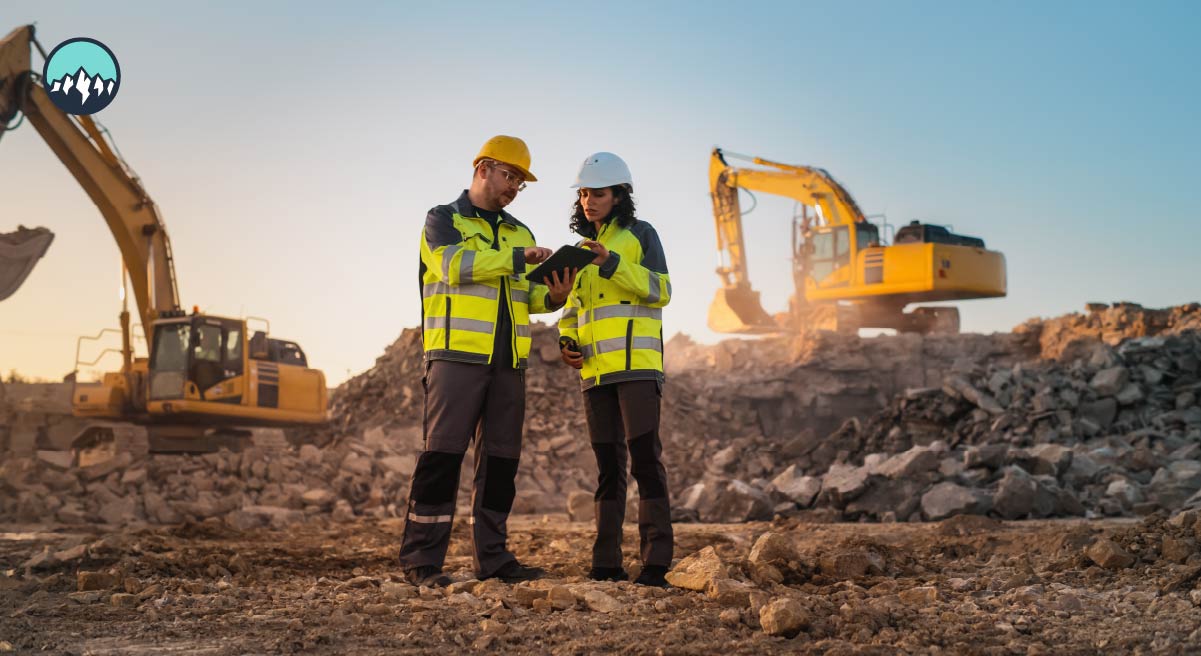Immigrate to Canada as a Construction Worker
13 Nov 2024

Canada has become one of the most popular destinations for skilled workers, especially in construction. With the booming real estate market and ongoing infrastructure projects, the country’s demand for construction workers has never been higher. This land of maple leaves may be your ideal destination if you are a construction worker looking for better opportunities.
If you are eager to join the construction boom here, our guide covers everything you need to know about immigrating to Canada as a construction worker, including the steps involved, benefits, and the prospects in the Canadian construction industry.
Does Canada Need Construction Workers?

Canada is experiencing a significant shortage of construction workers, particularly in skilled trades. Several key factors primarily drive this labor gap.
Aging Workforce
A significant portion of the construction workforce is approaching retirement age. As experienced workers retire, there is an urgent need to recruit and train skilled individuals to maintain the industry's productivity and ensure the timely completion of projects.
Infrastructure Projects
Canada has ambitious infrastructure development plans encompassing transportation, housing, and renewable energy sectors. These large-scale projects demand a substantial workforce to be executed efficiently. A skilled labor force is crucial to meet the increasing demand and maintain the momentum of these projects.
Economic Growth
The Canadian economy continues to expand, driving the demand for construction services across various sectors. This growth fuels the need for more construction workers to cater to the rising demand for new buildings, renovations, and infrastructure upgrades.
Immigration Policies
Canada has implemented immigration programs to attract skilled workers, including construction workers. These programs aim to address labor shortages and contribute to economic growth. However, a persistent need remains for more experienced workers to meet the growing demand in the construction industry.
To address this shortage, the Canadian government and industry stakeholders are taking steps to attract and retain skilled construction workers. These initiatives include:
- Apprenticeship Programs: Investing in apprenticeship programs to train the next generation of skilled workers,
- Immigration Programs: Streamlining immigration processes for skilled tradespeople,
- Workforce Development Initiatives: Providing training and upskilling opportunities for existing workers, and
- Public Awareness Campaigns: Promoting careers in the construction industry to attract young people.
Steps to Immigrate to Canada as a Construction Worker

If you are a construction worker interested in moving to Canada, there are several immigration pathways available. Here's a step-by-step guide to help you through the process.
Step 1: Research the Eligibility Requirements
Before starting the immigration process, ensure you meet the eligibility criteria for working in Canada as a construction worker. Most foreign workers must prove their skills, experience, and qualifications. This may include showing proof of work experience in construction, educational credentials, and specialized certifications.
Step 2: Choose an Immigration Program
Canada offers several immigration pathways for skilled workers. We take a look at the most common ones.
Express Entry
The Express Entry system is one of the fastest ways to immigrate to Canada. A points-based system selects candidates based on:
- Age,
- Education,
- Work experience, and
- Language proficiency.
Construction workers with a valid job offer or work experience in a skilled trade may qualify for the Federal Skilled Trades Program (FSTP), a part of Express Entry.
Provincial Nominee Program
Several Canadian provinces have Provincial Nominee Programs (PNPs) tailored for workers in high-demand occupations. If you have a job offer from an employer in a specific province, you may be eligible for the PNP, which can help speed up your application process. Here are some PNP pathways for foreign construction workers seeking Canadian permanent residency.
| Canadian Provinces | PNP Pathways, Streams, Categories, Programs |
|---|---|
| Alberta | Express Entry Stream |
| British Columbia | Skilled Worker Stream |
| Manitoba | Skilled Worker Overseas Stream |
| New Brunswick | Skilled Workers Stream |
| Newfoundland and Labrador | Skilled Worker Stream |
| Northwest Territories | Skilled Workers Program |
| NWT Express Entry | |
| Nova Scotia | Skilled Worker Stream |
| Labour Market Priorities Stream | |
| Ontario | Foreign Worker Stream |
| Prince Edward Island | Express Entry Stream |
| Skilled Workers Outside Canada Stream | |
| Quebec | Skilled Worker Program |
| Saskatchewan | International Skilled Worker Category |
| Yukon | Skilled Worker Program |
Labour Market Impact Assessment (LMIA)
You can apply for a Canadian work permit if you receive a job offer from a Canadian employer with a positive Labor Market Impact Assessment (LMIA) and are currently unable to apply for Canadian permanent residency. You can use the Canadian work experience gained from this to apply for Canadian permanent residency via the Canadian Experience Class (CEC).
Temporary Work Visa
If you are not eligible for Canadian permanent residency, you can apply for a temporary work visa. Many Canadian construction workers start with temporary work permits and later transition to Canadian permanent residency.
Step 3: Complete the Necessary Language Tests
Proficiency in English or French is essential for most Canadian immigration programs. You will likely need to take a language test, such as the International English Language Testing System (IELTS) for English or the Test d’Évaluation de Français (TEF) for French. A high language score will improve your chances of being selected.
Step 4: Submit Your Application
Once you have determined which immigration program best suits your skills and qualifications, you can submit your application. This process typically involves providing documentation such as work experience, language test results, educational qualifications, and other personal details. It is crucial to ensure all information is accurate and up to date to avoid delays.
Step 5: Wait for a Decision
After submitting your application, you will need to wait for a decision from Canadian immigration authorities. If your application is approved, you will receive a visa, work permit, or permanent residency status, depending on the program you applied for.
Step 6: Prepare for Life in Canada
Once you have received your immigration approval, it is time to prepare for your move. This includes finding accommodation, arranging transportation, and familiarizing yourself with Canadian culture and living standards. It is essential to ensure you are prepared to work in Canada, which may involve obtaining any required certifications or qualifications specific to your trade.
Benefits of Being a Construction Worker in Canada

Canada offers many advantages to construction workers who immigrate here. Below are some key benefits of pursuing a construction career in Canada.
Competitive Salary and Benefits
Construction workers in Canada can expect competitive salaries, which often include additional benefits such as healthcare, paid vacations, and retirement savings plans. Salaries vary depending on the region and specific trade but are generally higher than those in many developing countries. For example, according to Talent.com, the annual average salary for construction workers in Canada is 63 841,95 CAD compared to Mexico, where you earn just 47 579,29 CAD.
Pathway to Permanent Residency
One of the most attractive aspects of immigrating to Canada as a construction worker is the potential to gain permanent residency. Once you have gained work experience and are established in Canada, you may qualify for permanent residency through programs like Express Entry or the PNP. Permanent residents have access to social benefits, healthcare, and the ability to live and work anywhere in Canada.
Opportunities for Career Growth
The construction industry in Canada is continuously evolving, with new technologies, building practices, and projects being developed. Canadian construction workers have access to various opportunities to advance their careers, including specialized training, apprenticeships, and promotions. The Canadian government often supports the professional development of skilled tradespeople through various training and certification programs.
FAQs
Is it Easy to Find a Job in Canada as a Construction Worker?
Due to the ongoing demand for skilled tradespeople in Canada, it is generally easier to find a job as a construction worker. Major provinces such as Ontario, Alberta, and British Columbia consistently hire construction workers for infrastructure projects and residential developments. A valid job offer, relevant work experience, and certifications can improve your chances of securing employment.
Are There Age Restrictions for Immigrating to Canada as a Construction Worker?
With no strict age restrictions, the Express Entry system awards points based on age, with younger applicants typically receiving more points. However, individuals over 30 may still qualify if they have sufficient work experience, skills, and high language proficiency. The PNP may also have its criteria, but age is usually less of a factor.
Can I Bring my Family With me if I Immigrate to Canada as a Construction Worker?
Yes, if you qualify for permanent residency or a work permit, you can bring your spouse and dependent children to Canada. Your family members will be eligible for healthcare, education, and other social services in Canada. Include them in your immigration application for the appropriate permits or visas.




